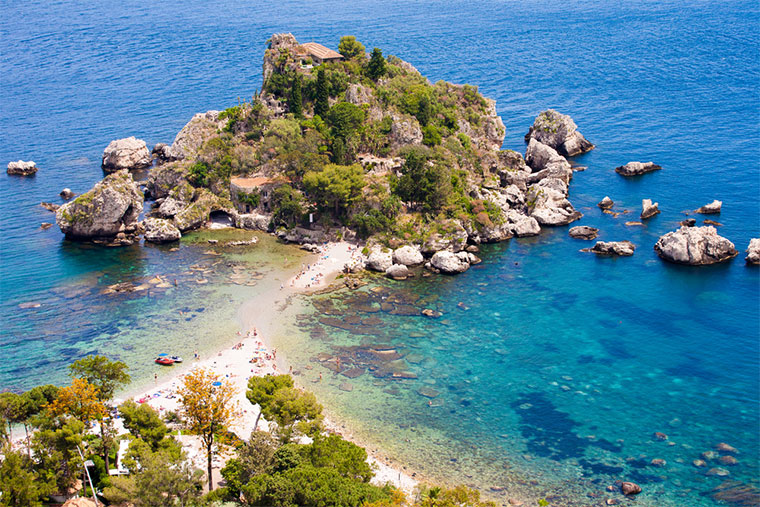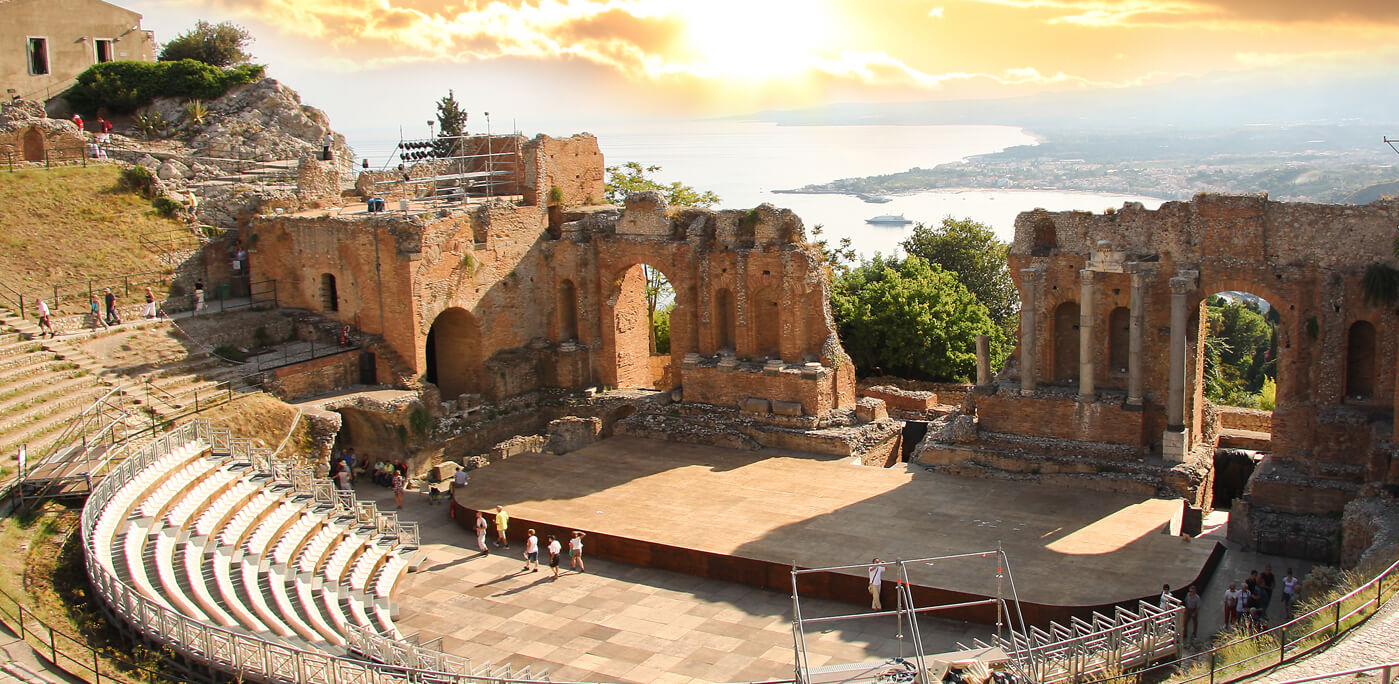If you’re an ancient history buff, or if you took Classics in college, you may remember that on one faithful day, sometimes between the 7th and the 8th century BC, the Greeks set foot in Sicily, and never quite left it. They may no longer be there physically (although Southern Italy repletes with linguistic minorities speaking Greek-based dialects), but the greatness of Greece left magnificent marks on the shores of this island: think of the Valley of the Temples, but also of Selinunte, for instance. And of Taormina, of course.
Taormina has risen to the front pages of international newspapers as it was chosen for the next G7 in 2017, but certainly reasons to visit, or to read about it, are more and more interesting than getting the opportunity to glimpse at the world’s most important leaders. One of them, just to go back to our beloved ancient Greeks, is its Graeco-Roman theatre whose unrivaled acoustics and majestic setting up on the hill, with a unique view upon the sapphire-blue Tyrrhenian sea, the bay of Naxos and Mount Etna, attract thousand of tourists each year. But Taormina is even more than that: location, history, sun, sea and good food, all meet in the characteristic alleys of this beautiful town.

A beloved destination for masters of arts and literature such as Goethe, Wilde, Dumas, Capote and Klimt, it’s been a peaceful haven for great names of the cinema, too: Greta Garbo and Marlene Dietrich used to vacation here. Perched on a promontory above the sea, Taormina gained its modern fame thanks to the Victorians and their love for traveling around southern Europe, in the attempt to absorb some well deserved sun and, of course, culture. It became integrant part of the Grand Tour between the 18th and the 19th century and it’s never lost its spot on the list of the most visited Italian town since. Think of winding streets and narrow alleys, beautiful medieval buildings and quaint cafés and restaurant to enjoy a quiet, luxurious luncheon or an afternoon coffee: here’s Taormina for you.
It’s history, though, that makes this place so incredibly rich. Here, the sounds and scents of many a civilisation mingle in the air; the Romans and the Greeks, the Arabs and the Normans, all the way down to the French and the Spaniards left a sign of their presence, to be found here and there in building and place names, habits and flavors.
Of course, many visit for the theatre: built around the 3rd century BC, it did host, in those first centuries of its existence, the works of all great Greek dramaturgists. The Romans loved it, too, and when they conquered Taormina they made it bigger. Today, the theatre’s not simply an archeological marvel, but an active stage for operas, drama representations and festivals.
Move to the old Roman town and you’ll encounter another classical jewel, the Odeon theatre. Built by the Romans in 21 BC, it was once central to Taormina’s cultural life, but time and successive constructions hid it from human eyes until 1892, when it was discovered by chance by a blacksmith, who hit on a brick wall while digging in his own backyard.
Of course, it’s not all about the Romans and the Greeks, in Taormina. If you’re into medieval architecture, Palazzo Corvaja, another symbol of the town, is where to go. Its walls and towers embrace elements of Arab, Norman and Gothic architecture, in a mixture of styles and epochs typical of Sicily, a variety resulting from the many lords this rich, luxuriant, beautiful land had throughout the centuries.
But Taormina is not only and solely perfect for art and history lovers. We’re in Sicily, in the end, so good food, sand and sea are always “du jour”. The town proper, as said, developed on a hill above the sea, but the water can be easily reached with Taormina’s own cable cars or using steep yet picturesque stone stairs.
Isola Bella is probably the best known of all of Taormina’s resorts: it’s a tiny island just off the coast, connected to town by a thin strip of land. Today, Isola Bella is a natural reserve, home to many species of birds and lizards, and has a small, but charming beach. Visiting Isola Bella hasn’t always been possible: it was owned by a private up to 1990, but was handed in to the Region of Sicily after its owner went bankrupt. Thankfully, we may add, otherwise visiting it today wouldn’t be possible.
Last, but not least, remember that Taormina hosts an important movie festival every year during the Summer. Created in 1955, its stage has been home to some of the greatest names of international cinema, including Sofia Loren, Cary Grant, Robert De Niro, Marlon Brando. It takes place in the Graeco-Roman theatre and, still today, is considered one of the most prestigious cinema festival in the world.
What’s not to love, then, about Taormina?































